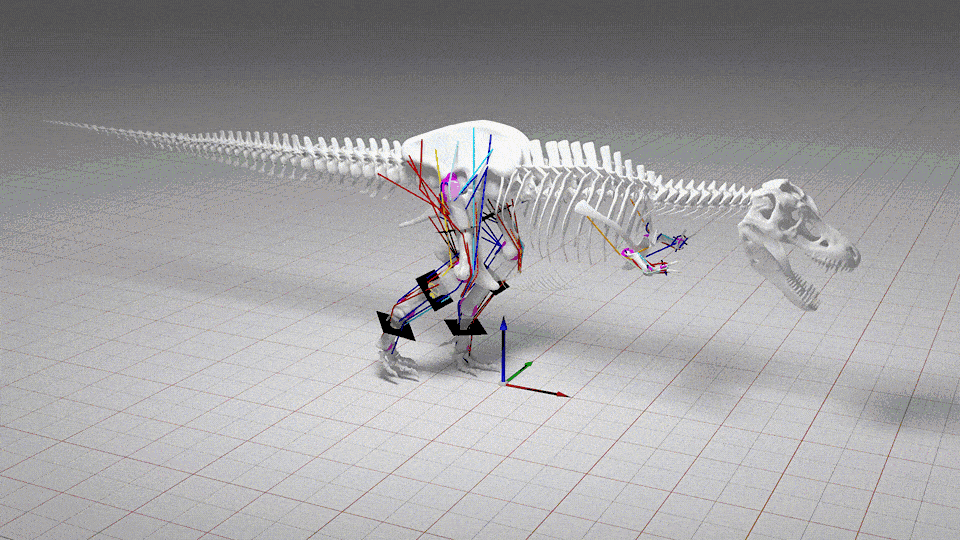When you purchase through links on our site , we may earn an affiliate commission . Here ’s how it works .
A dinosaur with an undulating noodle neck and a streamlined consistence like those of mod diving bird may have plunge through the depths of a Cretaceous ocean about 71 million to 72 million years ago , in what is now Mongolia . This piranha belong to a different ancestry of bird-footed dinosaur — bipedal and mostly pith - eatingdinosaurs — than the one that bring on innovative birds , but its consistence form and limb hint that it swam and dove as a penguin does , scientists of late discovered .
The underframe was in exceptional term with a nigh - complete skull . It was dig up from the Baruungoyot ( also spell Barun Goyot ) Formation , a fix in the southerly part of Mongolia ’s Gobi Desert date stamp to theCretaceous period(145 million to 66 million twelvemonth ago ) . In life , it would have been about the size of a mallard duck , and researchers noted that its gooselike cervix , flipperlike forelimbs and proportions of its digits resembled those of the Mongolian theropod genusHalszkaraptor , which is thought to be aquatic .

A reconstruction of Natovenator polydontus shows how the semiaquatic dinosaur may have swum and dived.
However , there is n’t enough fossil evidence fromHalszkaraptorand its confining relatives to suggest what their dead body shapes may have looked like .
The newfound fogey is more complete than any of the knownHalszkaraptorfossils ; the frame is " mostly articulate " with ribs that are oriented toward the tail , as they are in aquatic diving razzing , according to a subject area published Dec. 1 in the journalCommunications Biology . This put up scientists the first evidence of a nonavian theropod with a body that was optimized for reducing drag in aquatic environments .
Related:‘Dwarf dinosaur ' that lived on prehistoric island unearthed in Transylvania

The near-intact skull ofNatovenator polydontuspreserved its elongated nostrils, hinting at an aquatic lifestyle.
These adaptations , along with tooth that were " unco numerous " and " tightly packed " in the jaw , would have made the diving dinosaur a fearsome aquatic predator , and the issue and figure of its tooth suggests that it trace for Pisces the Fishes or insects , agree to the sketch . Researchers nominate the newly described genus and speciesNatovenator polydontus ; the genus comes from the Latin words for " swim " ( " nato " ) and " Orion " ( " venator " ) , while the species mean " many teeth " in Greek .
" The tenacious naris [ nostrils ] and ulterior rib predilection are only know inNatovenatorbecause these role are not well preserve inHalszkaraptor , " said study co - authorYuong - Nam Lee , a professor of vertebrate fossilology in the School of Earth and Environmental Sciences at Seoul National University in South Korea .
N. polydontusprobably was n’t able to soar through the zephyr with its short , drop forelimbs , though it may have used them to paddle through water . But one of the most compelling clues about its aquatic habits was its rib — specifically , the direction in which they were level . In land - based theropod dinosaur , the dorsal rib extend from the rachis in a mostly horizontal arc . But inN. polydontus , these ribs curved back toward its poop . Such back - orientate ribs lower the height of the rib cage , and are a feature of speech in diving bird , Lee order Live Science in an email . This suggests thatN. polydontushad a sleek body , " which would be advantageous because a streamlined body reduces retarding force in the water and permit efficient swim , " Lee say .

Ever since the first vertebrates crawled out of the oceans to live on land , " many dissimilar mathematical group have secondarily adapt to aquatic environs , " the scientist wrote in the discipline . Whales , for exemplar , evolved from four - legged terrene mammalsbefore adapting to live exclusively in the oceans . Among dinosaur , only birds and some of their out ancestorsevolvedaquatic or semi - aquatic form . ( A outre sail - back dinosaur visit Spinosaurus was briefly herald as a " swimming dinosaur " , but the claim is controversial among fossilist , and a 2021 survey in the journalPalaeontologia Electronicaproposed that Spinosaurus would have been a mediocre bather at well . )
— Dino with ' perfect and unparalleled ' butthole also had the previous belly push button known to science
— Giant , Struthio camelus - corresponding dinosaur and its smaller full cousin wander Mississippi during the late Cretaceous

— Ginormous Jurassic fossil in Portugal may be the magnanimous dinosaur ever line up in Europe
However , N. polydontuslooks like it would have been right at rest home in the ocean ’s depths .
" Natovenatoris a worthful find to wake how various dinosaurs ' ecologic position was , " Lee said . " recover semi - aquatic dinosaurs means that the ecological diversity was very high in dinosaur , and it could switch our prejudice about the life style of dinosaurs . More than 30 dissimilar blood line of tetrapods have independently invade water ecosystem . Why not dinosaurs ? "













